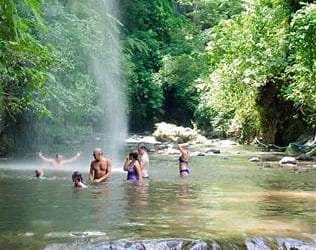If you’ve ever stood on the sand in Puerto Viejo and stared out at Salsa Brava, you’ll know it’s not a wave for the faint-hearted. This reef break, with its raw Caribbean power and shallow coral shelf, has humbled even the most experienced surfers. September, often thought of as a sleepy time for Costa Rica’s Caribbean coast, can be full of surprises—particularly when sneaky hurricane-season swells roll in from far-off storms. These hidden pulses can transform the usually mellow conditions into a heaving, barrel-filled spectacle that’s equal parts thrilling and terrifying.

Why is September Special for Salsa Brava?
September brings unique swell conditions because distant Atlantic hurricanes generate powerful waves that travel thousands of kilometres. These swells arrive with less crowd competition and more opportunity for clean rides.
- Hurricane-Season Magic – Swells from the Caribbean’s storm belt can line up perfectly, delivering glassy barrels that rival any Pacific wave.
- Less Surf Traffic – With many surfers chasing dry-season Pacific waves, Salsa Brava often feels like a private stage.
- Local Knowledge Advantage – Regulars know exactly when the swell will hit, using years of experience to predict the break’s quirks.
How Dangerous is Salsa Brava?
Salsa Brava is known as Costa Rica’s heaviest wave, breaking over sharp, shallow reef. One mistake can lead to serious injury.
- The Reef Factor – The coral shelf is unforgiving, just a foot or two below the surface at low tide.
- Wave Power – The lip throws heavy, and wipeouts can feel like being hit by a moving wall.
- Rip Currents – Strong currents can pull surfers out of position quickly, especially on bigger days.
What’s the Best Way to Prepare for a September Session?
Only experienced surfers should attempt Salsa Brava during a September swell. Preparation is everything.
- Board Choice – Bring a sturdy shortboard with extra volume to help with steep take-offs.
- Protective Gear – A good leash, reef booties, and even a helmet can make a difference.
- Fitness & Breath Control – Expect long hold-downs and fast paddles to avoid the impact zone.
Can You Just Watch Instead?
Absolutely. For many, watching is the best way to enjoy Salsa Brava in full power.
- Beachfront Cafés – Grab a coffee and watch the sets roll in while staying safely onshore.
- Photography Hotspots – The reef’s proximity to shore means you can capture incredible surf shots without a boat.
- Local Guides – Many offer narrated viewing tours, explaining the history and stories of the wave.
The Beach Flora: Sea Grape’s Seasonal Bloom
Along the shores near Salsa Brava, you’ll often see Sea Grape trees (Coccoloba uvifera) blooming. These hardy coastal plants produce flowers between August and October, later maturing into clusters of purple fruit. Traditionally, the leaves have been used in folk medicine to treat sore throats and inflammation. While melipona bees don’t typically visit Sea Grape flowers as their main source, they may forage there when other blooms are scarce.
Final Thoughts
Salsa Brava in September is a reminder that the Caribbean side of Costa Rica holds secrets the Pacific can’t match. Whether you’re paddling into a cavernous barrel or sipping a smoothie while watching someone else do it, this wave demands respect and rewards those who understand its moods. And as with all of Costa Rica’s natural treasures, it’s worth preserving. If you enjoy stories like this, consider supporting local conservation and surf safety initiatives—they help protect the coastline and the communities that depend on it.






